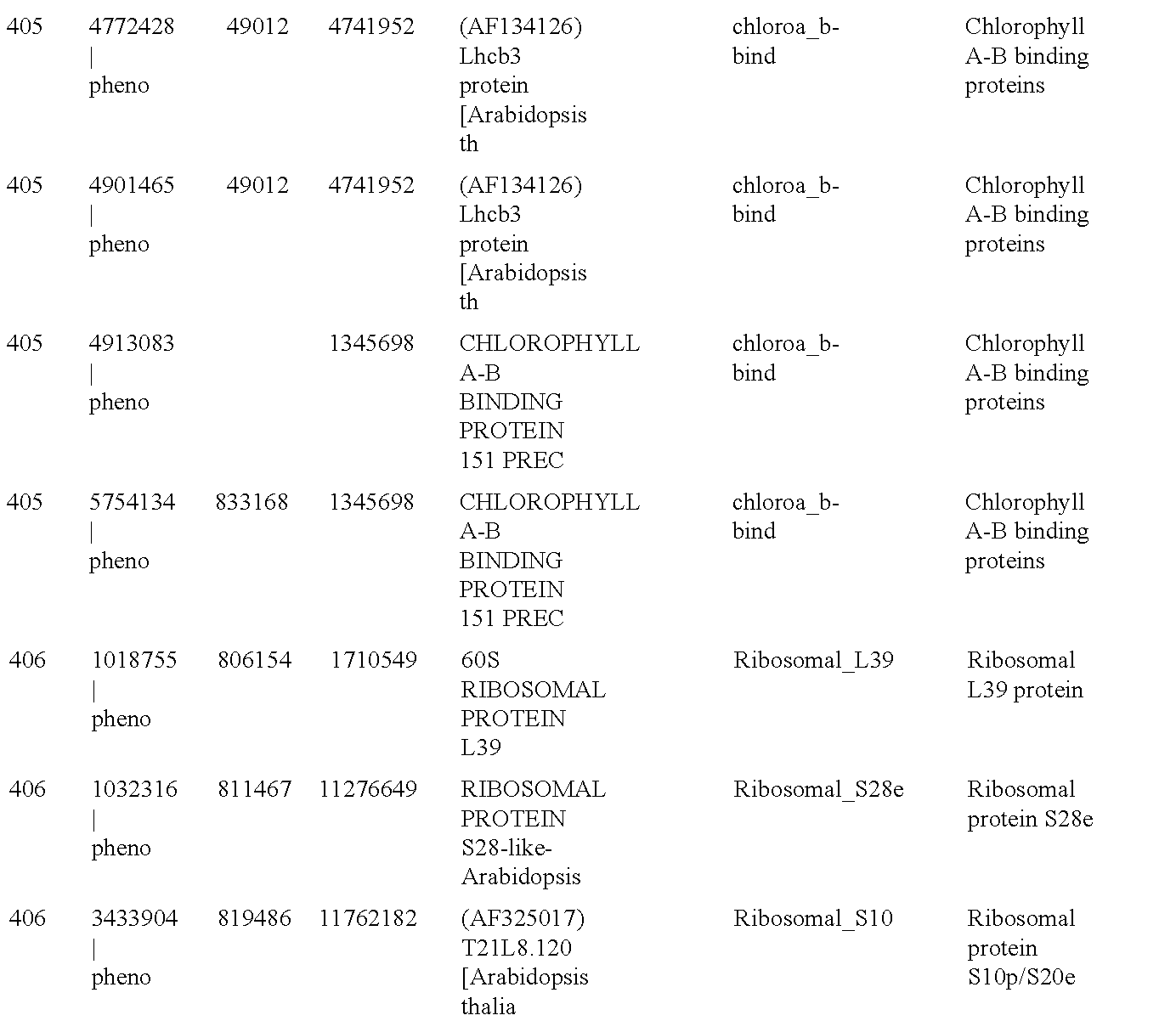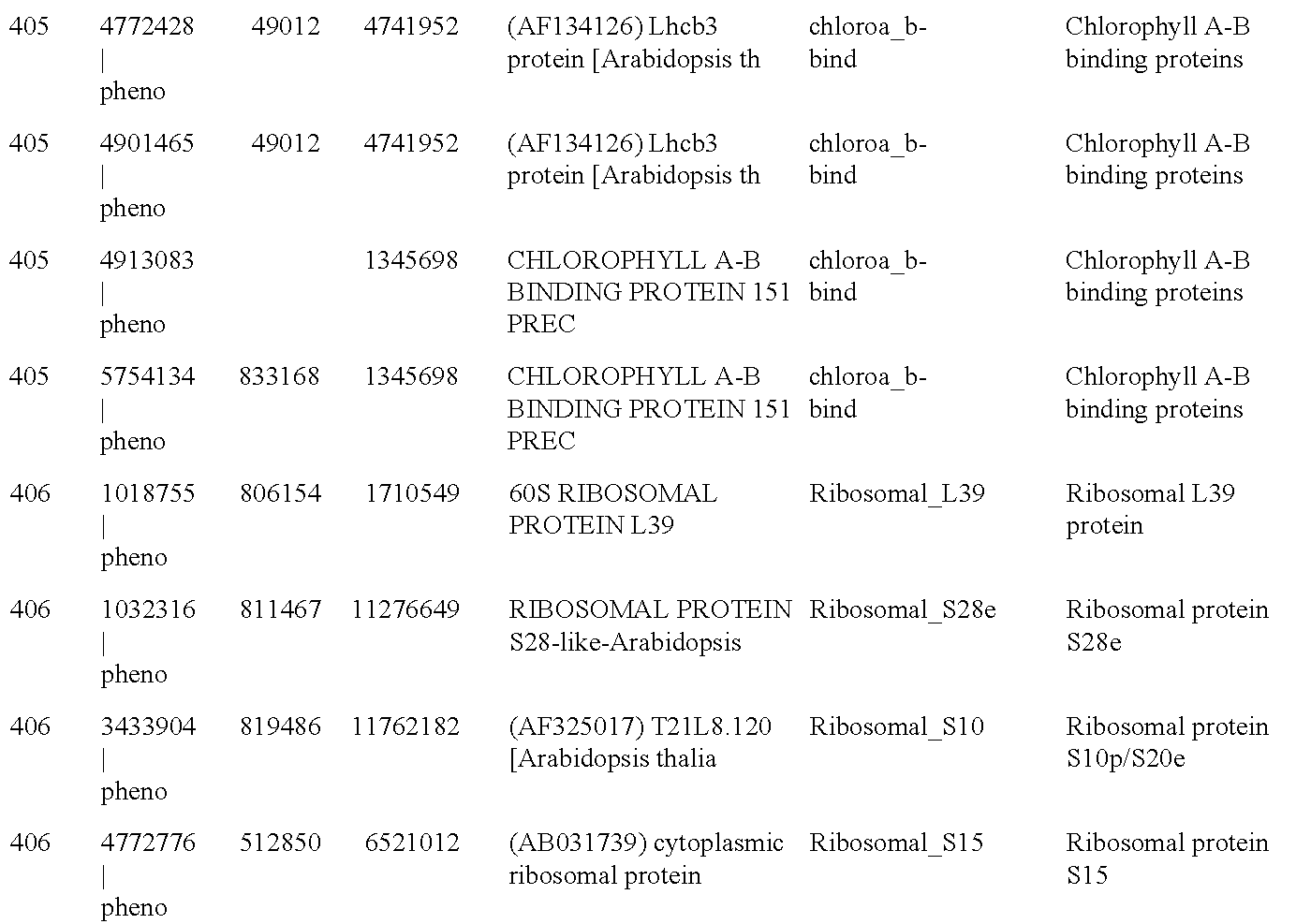Promoter, promoter control elements, and combinations, and uses thereof
a technology of promoter control and control elements, applied in the direction of peptides, peptide sources, peptide/protein ingredients, etc., can solve problems such as embyo lethality, and achieve the effect of enhancing or reducing regions
- Summary
- Abstract
- Description
- Claims
- Application Information
AI Technical Summary
Benefits of technology
Problems solved by technology
Method used
Image
Examples
example 1
cDNA Preparation
[2330]A number of the nucleotide sequences disclosed in the Reference and Sequence tables or polynucleotides encoding polypeptides of the Protein Group or Protein Group Matrix tables, herein as representative of the SDFs of the invention can be obtained by sequencing genomic DNA (gDNA) and / or cDNA from corn plants grown from HYBRID SEED # 35A19, purchased from Pioneer Hi-Bred International, Inc., Supply Management, P.O. Box 256, Johnston, Iowa 50131-0256.
[2331]A number of the nucleotide sequences disclosed in the Reference and Sequence tables or polynucleotides encoding polypeptides of the Protein Group or Protein Group Matrix tables, herein as representative of the SDFs of the invention can also be obtained by sequencing genomic DNA from Arabidopsis thaliana, Wassilewskija ecotype or by sequencing cDNA obtained from mRNA from such plants as described below. This is a true breeding strain. Seeds of the plant are available from the Arabidopsis Biological Resource Cent...
example 2
I. Example 2
Southern Hybridizations
[2347]The SDFs of the invention can be used in Southern hybridizations as described above. The following describes extraction of DNA from nuclei of plant cells, digestion of the nuclear DNA and separation by length, transfer of the separated fragments to membranes, preparation of probes for hybridization, hybridization and detection of the hybridized probe.
[2348]The procedures described herein can be used to isolate related polynucleotides or for diagnostic purposes. Moderate stringency hybridization conditions, as defined above, are described in the present example. These conditions result in detection of hybridization between sequences having at least 70% sequence identity. As described above, the hybridization and wash conditions can be changed to reflect the desired percentage of sequence identity between probe and target sequences that can be detected.
[2349]In the following procedure, a probe for hybridization is produced from two PCR reaction...
example 3
Microarray Experiments and Results
Example 3
Microarray Experiments and Results
1. Sample Tissue Preparation
(a) Roots
[2458]Seeds of Arabidopsis thaliana (Ws) were sterilized in full strength bleach for less than 5 min., washed more than 3 times in sterile distilled deionized water and plated on MS agar plates. The plates were placed at 4° C. for 3 nights and then placed vertically into a growth chamber having 16 hr light / 8 hr dark cycles, 23° C., 70% relative humidity and ˜11,000 LUX. After 2 weeks, the roots were cut from the agar, flash frozen in liquid nitrogen and stored at −80° C. (EXPT REP: 108439 and 108434)
(b) Root Hairless Mutants
[2459]Plants mutant at the rhl gene locus lack root hairs. This mutation is maintained as a heterozygote.
[2460]Seeds of Arabidopsis thaliana (Landsberg erecta) mutated at the rhi gene locus were sterilized using 30% bleach with 1 ul / ml 20% Triton-X 100 and then vernalized at 4° C. for 3 days before being plated onto GM agar plates. Plates were placed ...
PUM
| Property | Measurement | Unit |
|---|---|---|
| Temperature | aaaaa | aaaaa |
| Temperature | aaaaa | aaaaa |
| Fraction | aaaaa | aaaaa |
Abstract
Description
Claims
Application Information
 Login to View More
Login to View More - R&D
- Intellectual Property
- Life Sciences
- Materials
- Tech Scout
- Unparalleled Data Quality
- Higher Quality Content
- 60% Fewer Hallucinations
Browse by: Latest US Patents, China's latest patents, Technical Efficacy Thesaurus, Application Domain, Technology Topic, Popular Technical Reports.
© 2025 PatSnap. All rights reserved.Legal|Privacy policy|Modern Slavery Act Transparency Statement|Sitemap|About US| Contact US: help@patsnap.com



